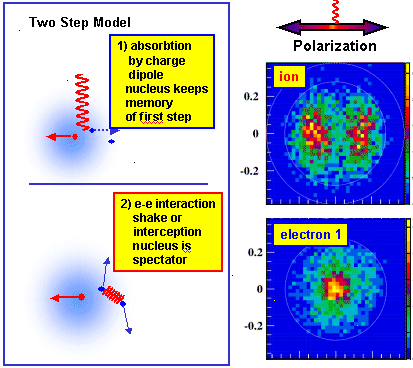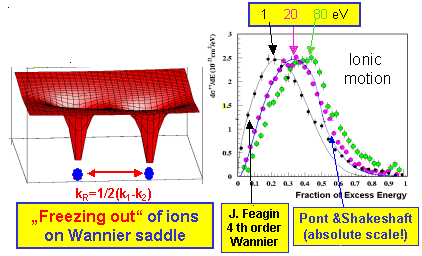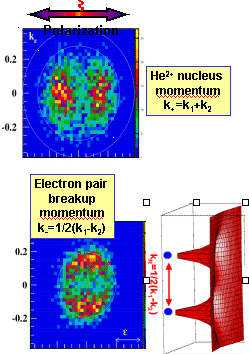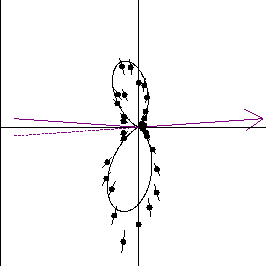Fully differential cross section for photo double ionization by linear polarized photons from threshold to 100eV.
Experiment performed by the COLTRIMS collaboration at ALS (publications).
|
Overview:
Using Coltrims a series of experiments has explored the full final state momentum space
of the three body breakup of Helium. The two electrons momenta and the momentum vector
of the recoiling He2+ are connected by momentum conservation. Detecting the ion and one
electron is hence equivalent to the traditional electron-electron coincidence.
The full solid angle for ion and electron allows to measure all energy sharing and angles in
a single experiment and also most importantly to display the data in any set of coordinates.
In addition to the elektron momenta k1, k2, the Jacobi coordinates k+=k1+k2 (which is equal
and oposite to the ion momentum) and k- =1/2 (k1-k2) have proven to show the significant
physics of the process. 

In such momentum space images the
characteristics of the photo double ionization process become directly visible.
Figure compares a two dimensional representation
of the final state momentum distribution of the He2+ ion and
one of the electrons. The nucleus clearly shows a dipolar emission
pattern as a result of the absorption of the photon. This characteristics
of the primary absorption process is completely washed out in the
electronic momentum distribution. 
Aproaching the threshold the ions tend to freeze out on the Wannier saddle of the dielectron. 
The ion moves preferentially parallel to the polarization (beta parameter close to 2) which is a consequence of the absorption of the dipolar photon. This breakup however leads only to double ionization if the two electron break up perpendicular to the ion motion, allowing the ion to escape from the saddle and not to be re-captured. Absolute differential cross sections:
Since Coltrims collects all fragments with the full solid angle, it is staight forward to derive
differential cross section for all energy sharings and all angles on an absolute scale.
Such data can be found in: doerner98pra,bräungjpb,knapp,achlerjpb 
|